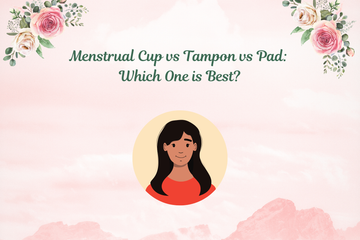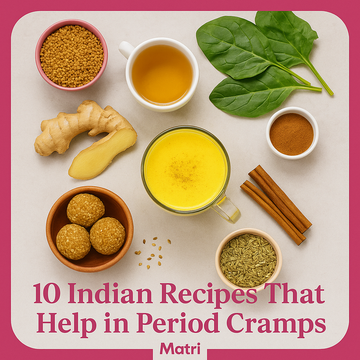Choosing the right menstrual product is an important decision for every individual who menstruates. Today, there are more options than ever, including pads, tampons, and menstrual cups. Each has its own advantages, challenges, and suitability based on comfort, lifestyle, and environmental impact. This guide offers a detailed and professional look at the best menstrual product comparison to help you decide which option might work best for you.
Understanding the Basics of Each Product
Before diving into comparisons, it's essential to understand what each menstrual product is and how it works. A sanitary pad is an absorbent material worn inside underwear to absorb menstrual flow. It’s often considered the easiest and most accessible product, especially for beginners. Tampons are inserted into the vagina to absorb blood directly at the source. Menstrual cups are flexible, medical-grade silicone or rubber cups inserted into the vagina to collect menstrual fluid rather than absorb it. These basics set the foundation for evaluating their effectiveness, comfort, and overall impact.
Comfort and Ease of Use
Pads are typically the most beginner-friendly option. They are non-invasive and simple to use but may feel bulky during physical activities. Tampons offer more freedom of movement and are discreet, but they require correct insertion to be comfortable. Some users may find tampons challenging to use at first. Menstrual cups, while eco-friendly and cost-effective, require a learning curve for proper insertion and removal. However, once mastered, they can be very comfortable and need to be changed less frequently, often lasting up to 12 hours.
Hygiene and Safety Considerations
Pads, when changed regularly, are hygienic and low-risk. However, they can cause skin irritation if left on too long or during hot weather. Tampons must be changed every 4 to 8 hours to avoid the risk of Toxic Shock Syndrome (TSS), a rare but serious condition. Menstrual cups pose no risk of TSS and are safe to use for longer periods. They do, however, need to be sterilized between cycles, and users should always wash their hands before insertion and removal to maintain hygiene.
Environmental Impact and Sustainability
When it comes to sustainable menstrual options, menstrual cups clearly lead the way. A single cup can last up to ten years with proper care, drastically reducing waste. Tampons and pads, especially those with plastic components, contribute significantly to landfill waste. Pads take hundreds of years to decompose. Tampons are slightly better, but their applicators and packaging often are not biodegradable. If you’re looking for eco-friendly period products, reusable cups or cloth pads are the top choices.
Cost Over Time
Although pads and tampons are relatively inexpensive upfront, their costs add up over the years. A person may spend thousands over a lifetime on disposable products. Menstrual cups require a higher initial investment but are far more economical in the long run. One cup can cost between INR 500 to INR 1000 but lasts several years, making it a smart financial and sustainable choice.
Activity and Lifestyle Suitability
For active individuals, tampons and menstrual cups are more suitable as they allow for greater movement without leakage. Athletes often prefer tampons or cups for their reliability during physical activity. Pads, on the other hand, may shift during intense movement and are less discreet under tight clothing. For long travel or full-day routines, menstrual cups are especially useful due to their long wear time.
Convenience and Availability
Pads and tampons are widely available in stores, pharmacies, and even convenience shops. They are easy to find and purchase at short notice. Menstrual cups, while growing in popularity, may not be as readily available in all areas and often need to be ordered online. However, many online platforms now offer a wide range of sizes and brands for different needs.
Health and Skin Sensitivity
Some individuals experience allergic reactions or rashes from certain pad materials, especially if they contain synthetic fragrances or dyes. Tampons can also irritate sensitive skin or dry out the vaginal walls. Menstrual cups made of medical-grade silicone are generally hypoallergenic and less likely to cause irritation, making them a preferable choice for those with sensitive skin.
Period Product Pros and Cons Summary
Each product has clear pros and cons. Pads are convenient but generate a lot of waste. Tampons are discreet but require frequent changing and pose a risk of TSS. Menstrual cups are cost-effective and environmentally friendly but need practice to use comfortably. Your choice depends on your body, lifestyle, values, and comfort level.
Making the Best Choice for You
Ultimately, the best menstrual product comparison depends on individual preferences. If sustainability and cost are priorities, menstrual cups are the clear winner. If comfort and ease are your main concerns, pads might suit you better. For an active lifestyle and minimal fuss, tampons offer the best balance. Try different options to see what works best for your body and needs. The most important factor is feeling safe, confident, and comfortable during your period.
FAQs
1. Are menstrual cups more eco-friendly than pads and tampons?
Yes. Menstrual cups are reusable and can last for years, significantly reducing the waste caused by disposable pads and tampons, making them one of the most eco-friendly period products available.
2. Can teenagers use menstrual cups safely?
Yes. Teenagers can use menstrual cups safely, but it may take some time to learn the correct way to insert and remove them. Starting with a smaller cup designed for teens can make the process easier and more comfortable.
3. Do tampons cause infections?
Tampons are generally safe, but if not changed regularly, they can increase the risk of infections or even Toxic Shock Syndrome. Proper hygiene and timely changing are essential to avoid complications.
4. Are pads suitable for overnight use?
Yes. Pads, especially overnight variants, are designed to handle longer wear and heavier flow, making them a reliable option while sleeping, though they should still be changed in the morning.
5. Is it safe to swim with a menstrual cup or tampon?
Yes. Both menstrual cups and tampons can be used while swimming. They provide internal protection and prevent leakage, offering a comfortable solution for water activities.
6. How often should a menstrual cup be emptied?
Menstrual cups should be emptied every 8 to 12 hours depending on your flow. For heavy flow, it might need to be emptied more often. Always follow hygiene practices while removing and reinserting the cup.
7. Are reusable cloth pads a better alternative to disposables?
Reusable cloth pads are sustainable menstrual options that reduce waste and are cost-effective in the long run. They require washing after each use but are gentle on the skin and better for the environment.
8. Can I use a tampon if I have a light flow?
Yes. Tampons come in different absorbency levels, including light flow versions. Choosing the right size helps avoid dryness or discomfort and ensures better protection.
9. Do menstrual cups leak easily?
No. When inserted correctly, menstrual cups form a seal inside the vagina, preventing leaks even during movement. Proper positioning and fit are important to ensure leak-free protection.
10. Which period product is best for traveling?
Menstrual cups are ideal for travel due to their long wear time, low maintenance, and no need to carry multiple products. They save space, reduce waste, and offer all-day comfort on the go.






